Search Results for Tag: polar bears
Arctic investment: still a hot prospect?
As I mentioned in the last post, I talked to various people about the current state of interest in the Arctic, in connection with the ArcticNet conference on “Arctic Change” in Ottawa last week. I would like to share some of the insights I gained with you here on the Ice Blog. With a lot of concerned people still suffering from a kind of mental hangover after the two weeks of UN climate negotiations in Lima, let me also direct you to a commentary I wrote for DW: Lima: a disappointment, but not a surprise. If you expected any action at the meeting which might help stop the Arctic warming, you will have been highly disappointed. If, like me, you think the transition to renewables and emissions reductions we need have to happen outside of and alongside that process, all day and every day, your expectations will not have been so high.
But back to the Arctic itself. With Canada coming to the end of its spell at the helm of the Arctic Council and preparing to hand over the rotating presidency to the USA at the end of the year, the annual conference organized by the research network ArcticNet was bound to attract a lot of interest. More than 1200 leading international Arctic researchers, indigenous leaders, policy makers, NGOs and business people attended the Ottawa gathering to discuss the pressing issues facing the warming Arctic.
Hugues Lantuit from Germany’s Alfred Wegener Institute is a member of the steering committee. He’s an expert on permafrost and coastal erosion. He told me in an interview that the region had to prepare for greater impacts ,with the latest IPCC report projecting the Arctic would continue to warm at a rate faster than any place on earth. While the retreat of sea ice allows easier access for shipping and more scope for commercial activities, Lantuit is concerned about the thawing of permafrost, a key topic at the Ottawa gathering:
“An extensive part of the circumpolar north is covered with permafrost, and it’s currently warming at a fast pace. A lot of cities are built on permafrost, and the layer that is thawing in the summer is expanding and getting deeper and deeper, which threatens infrastructure.”
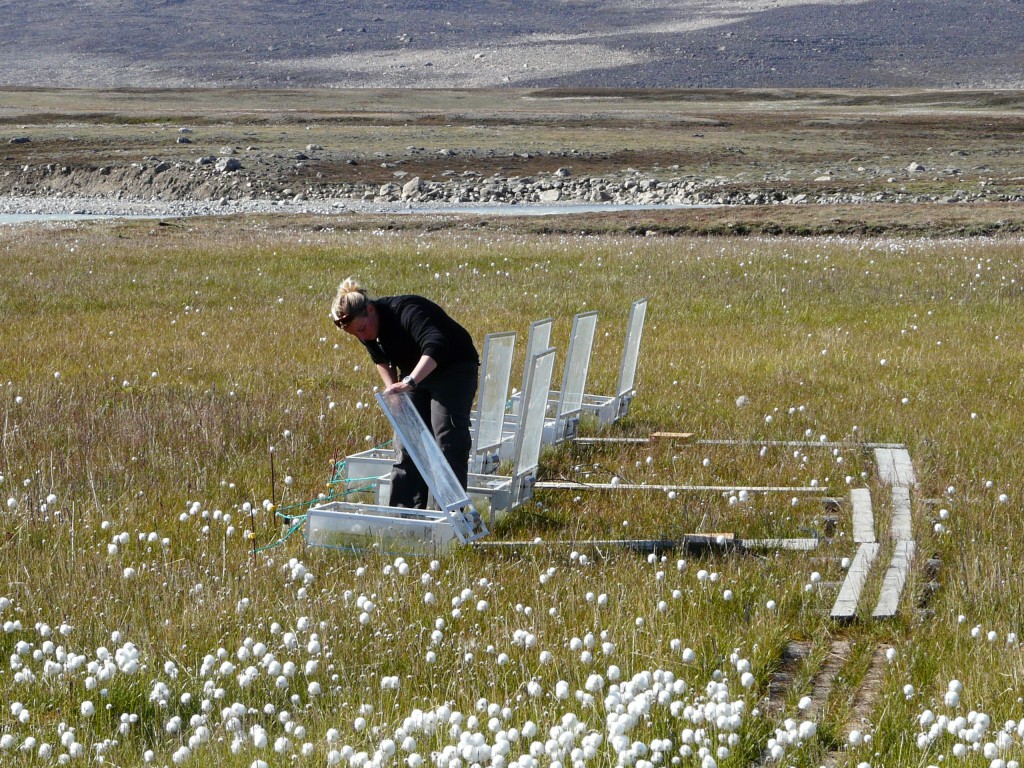
Scientists at measuring stations like the one I viisted at Zackenberg, Greenland, measure the amount of greenhouse gases emitted by melting permafrost. (I.Quaile)
Northern communities worried
Residents of northern communities are concerned about the impact of melting permafrost on railways, landing strips and buildings. Lantuit and his colleagues have created an integrated data base for permafrost temperature, with support from the EU. At the Ottawa meeting, he and his colleagues worked on identifying priorities for research, taking into account the needs of communities and stakeholders in the Arctic.
Another key issue on the Ottawa agenda was coastal erosion. Sea ice acts as a protective barrier to the coast, preventing waves from battering the shore and speeding up the thaw of permafrost. With decreasing sea ice in the summer, scientists expect more storms will impact on the coasts of the Arctic. “In some locations, especially in Alaska, we see much greater erosion than there was before”, says Lantuit. This creates a lot of issues: “There is oil and gas infrastructure on the coast, villages, people, also freshwater habitats for migrating caribou, so the coast has a tremendous social and ecological value in the Arctic, and coastal erosion is obviously a threat to settlements and to the features of this social and economical presence in the Arctic.”
Bad news for furred and feathered friends
Amongst the participants at the conference was George Divoky, an ornithologist who has spent every summer of the past 45 years on Cooper Island, off the coast of Barrow, in Arctic Alaska. Divoky monitors a colony of black guillemots that nest on the island in summer. His bird-watching project turned into a climate change observation project as he witnessed major changes in the last four decades:
“Warming first aided the guillemots (1970s and 1980) as the summer snow-free period increased. The size of the breeding colony increased during the initial stages of warming. Continued warming (1990s to present) caused the sea ice to rapidly retreat in July and August when guillemots are feeding nestlings, and the loss of ice reduced the amount and quality of prey resulting in widespread starvation of nestlings.”
The 2014 breeding season on Cooper Island had the lowest number of breeding pairs of Black Guillemots on the island in the last 20 years, Divoky says. Reduced sea ice is increasingly forcing polar bears to seek refuge on the island, eating large numbers of nestlings. Polar bears were rare visitors to the island until 2002.
The Arctic and the global climate
Divoky went to Ottawa to fit his research and experience into the wider context of climate impacts in the Arctic. Researching climate change and its effects are important but of little practical use if the research does not inform government officials and result in policies that address the causes of climate change, Divoky argues.
I asked Hugues Lantuit whether he thought the UN climate conference in Peru could achieve anything that would halt the warming of the Arctic. He said reducing emissions and reducing temperature were the only way to reduce the thaw of permafrost. But he is quite clear about the fact that there is no mitigation strategy in terms of permafrost directly. “You would have to put a blanket over the entire permafrost in the northern hemisphere. This is not possible.”
At the same time, he stressed the key role of the Arctic with regard to the whole world climate: “Permafrost contains a lot of what we call organic carbon, and that is stored in the upper part. And if that warms, the carbon is made available to microorganisms that convert it back to carbon dioxide and methane. And we estimate right now that there is twice as much organic carbon in permafrost as there is in the atmosphere”.
So far, the international community has not been able to take measures to break that vicious circle.
What happened to the Arctic gold rush?
Communities who live and companies that work in the Arctic have to focus on adaptation to the rapid change, says Lantuit. In his eyes, economic activity is increasing, posing new challenges for infrastructure and the environment.
Malte Humpert, the Executive Director of the Arctic Institute, a non-profit think tank based in Washington DC has a different view on the matter. He says while attendance at Arctic conferences and interest in the Arctic is still high, commercial activity has actually been cooling off. “We are seeing a slow-down of investment. Up to this point there has been a lot of studying, a lot of interest being voiced, with representatives from China or South Korea, Japan, Singapore or other actors, arriving at conferences, speaking about grand plans. But up to this point a lot of the talk has been just that.” A lot of activity has been put on hold, says Humpert. He says the “gold rush mentality we saw a few years ago” has weakened. “There was a lot of talk about Arctic shipping initially, then we had oil and gas activity in 2012, north of Alaska, then we had the discussion about minerals in Greenland. The question is now, with the oil price being down below 70$ a barrel, some political uncertainties over the Ukraine, involving the EU and Russia, how will that affect Arctic development?”
Humpert stresses the Arctic does not exist in a vacuum, but has to be seen within the global context. Sanctions on Russia because of the Ukraine crisis have created economic problems for Moscow and limited access to technology it might need for its Arctic activities. “Maybe Arctic development has been oversold and overplayed and will be more of a niche operators’ investment. One could definitely question if there will be this global push into the Arctic.”
Arctic development on ice
Humpert is skeptical that any major development will take place before 2030. He says developing the infrastructure in terms of ports and communications in the remote Arctic region would require billions of dollars of investment, and would have to be a very long-term proposition. It will also depend to a large extent on exactly how climate change affects ice conditions in the Arctic. Climate change can make the climatic conditions in the Arctic more variable. This means that for a temporary period, there might even be more ice, which would block transport routes.
The Arctic Institute says there has actually been a slow down this year in terms of navigation on the northern sea route (NSR) in particular: “The season just closed about a week ago. Last year we had 1.35 million tonnes of cargo being transported along the NSR, this year we had less than 700,000 tonnes, so an almost 50% decrease, just because there was more ice in the way”, says Humpert.
Whether slower development is good news or bad depends on your perspective. The lull in Arctic activity could pre-empt environmental degradation or destruction, says Humpert, and leave scope to consider development of the Arctic in what he calls a 21st century way. Instead of “old-school” thinking about extracting minerals, oil and gas and increasing shipping, there could be a focus on bringing modern, high-speed communications, fiber optics and thinking about renewables, such as wave energy. This would benefit the small populations in the Arctic, the expert argues.
But from the viewpoint of a country like Russia, he adds, where 40 percent of your exports are generated above the Arctic circle, in terms of hydrocarbon resources, the slowdown in Arctic development because of the drop in oil prices and political tensions over Ukraine is very worrying.
So while these developments seem to have brought the Arctic a breathing space, ultimately, the commercialization of the region could be just a matter of time. Ottawa conference organizer Lantuit argues that there has always been activity in the high North. The priority now, he says, must be to ensure international cooperation and additional investment in protecting the environment and maintaining safety in a region where rapid change seems to have become the status quo.
From Alaska to Ottawa
Ottawa has been the setting for “Arctic Change”, another major Arctic conference this week. It is organised by the research network ArcticNet. I was not able to attend, but have been interviewing various people for an article on DW about the meeting, and about what is happening in the Arctic at the moment. One of the people I spoke to was George Divoky, who went to the meeting to put his own work into context and get the “big picture” of how climate change is having an impact on the Arctic. George is the mainstay of Friends of Cooper Island
He has a bird research station on Cooper Island, off Barrow, Alaska. For 45 years, he has been there every summer, observing a colony of black guillemots, who breed there. As he told me when I first met him during a trip to Alaska in 2008, his ornithological observation widened out into an observation of climate change over the years, witnessing some dramatic changes. I would like to share his views with you here on the Ice Blog.
Iceblogger: Why are you attending the conference and what do you expect from it?
As someone who has spent the past 45 summers studying seabirds in the Alaskan Arctic, I am very interested in hearing the findings of arctic researchers working in other disciplines and geographic areas.
I expect to be brought up to date on the most recent findings of how warming and development is affecting the ecosystems and people of the Arctic. The information I obtain allows me to put my work (which is on a single species breeding on one island) in a much larger context.
Has the Canadian chairmanship of the Arctic Council affected Canada’s interest in the Arctic?
I know little of the international politics of the Arctic but my feeling is that Canada has always had a major interest in the Arctic because of the extent of their arctic lands and the large number of villages and settlements. With all that is now going on in the Arctic, Canada’s chairmanship certainly provides an opportunity for the country to focus on the region even more.
Are there differences in attitudes to the Arctic in the various countries involved? US; Canada, Russia, Norway…?
I feel that the US (with the exception of the indigenous people who live there) tends to treat its small part of the Arctic as a place to exploit natural resources and conduct research while Canadians have a much more organic (holistic) approach to the region. My impression is that is also true for Scandinavian countries.
What has been your experience of Arctic change on Cooper Island this year?
The 2014 breeding season on Cooper Island had the lowest number of breeding pairs of Black Guillemots in the last 20 years. Breeding success in 2014 was low as all of the younger siblings in then nests died from starvation during a major windstorm that occurred in August after ice retreat and parent birds could not find sufficient prey. We also had more polar bears on the island and interactions with them than during the last few years. Polar bears were rare visitors to the island until 2002.
What impacts of the above-average rise in temperature have you seen over your years on Cooper island?
Warming first aided the guillemots (1970s and 1980) as the summer snow-free period increased and was better suited for the 90 days it takes guillemots to breed. The size of the breeding colony increased during the initial stages of warming. Continued warming (1990s to present) caused the sea ice to rapidly retreat in July and August when guillemots are feeding nestlings and the loss of ice reduced the amount and quality of prey resulting in widespread starvation of nestlings. Reduced sea ice also forced polar bears to seek refuge on the island with large numbers of nestlings being eaten by bears.
How serious is the problem of thawing permafrost?
Thawing of permafrost has the potential to drastically change terrestrial ecosystems due to changes in drainage and plant communities. The large shorebird and waterfowl populations breeding on the tundra require large areas of ponds and lakes for breeding. Melting permafrost is allowing water to drain from the surface decreasing the extent of aquatic habitats while increasing the depth for root growth which facilitates shrubs replacing tundra plants.
Do you have a sense that there is a “rush for the Arctic’s resources” or is this just media hype?
It is clear to me that there is a rapidly increasing interest in arctic resources from government and industry.
Where should the priorities of Arctic research and Arctic policy be in coming years?
While there will certainly be increased research in the Arctic in coming years I think it is important to realize that just because humans know more about a region or ecosystem it does not necessarily follow that they will be any better at protecting it from impacts – or likely to do so. Pre-development ecological research is something most governments feel they must do to satisfy concerns about environmental degradation, but the ways in which that research can limit the effects of the post-development degradation – or assist in mitigating that degradation – is unclear. Similarly, researching climate change and its effects are important but of little practical use if the research does not inform government officials and result in policies that address the causes of climate change.
With the climate conference going on in Peru – do you have the feeling the world takes the changes in the Arctic seriously?
I feel that the entire issue of current and predicted climate change is now being taken more seriously and, as a result, there is more focus on what is occurring in the Arctic since people and government now see the changes in the Arctic as being less removed from their own experience.
Are you optimistic about the future of the Arctic?
I am not optimistic that what used to be considered the “Arctic” will persist into the future. The Arctic where I do research now bears little resemblance to the Arctic I first went to in 1970. With models showing summer sea ice may soon disappear and predictions for increasing temperatures and development, it is likely that current and future generations of researchers will also be taken aback with the pace of change during their time in the region. Clearly, the Arctic as a geographic region will persist but the characteristics that are evoked by the word “arctic” (i.e. snow and ice dominated landscapes far from human industrial development) will no longer apply to the region. And, of course, the biota adapted to the arctic ecosystems of the past will have very uncertain futures given the pace of change.
What will it look like in 20, 30, 50 years?
Much of the Arctic became technically subarctic during the last 20 years. At least for the near future, winters will always be cold in the Arctic so some seasonal snow and ice cover will be present but the annual period when snow and ice are present will decrease. The rate at which these changes will take place is unclear as an Arctic that is ice free in summer (and losing land ice in Greenland) might cause more rapid changes.
Can anything happen to save it?
I was very lucky to be able to be in the Arctic in the late 20th Century but it now seems clear that with the projected increases in atmospheric CO2 and resulting increases in temperatures and ocean acidifcation that the Arctic (as well as many of the earth’s natural areas) could be unrecognizable by the middle of the 21st Century.
Arctic icon in decline
As I plan my coverage of this year’s annual UN climate conference, this time in Peru, a news item from WWF pops up in my mail box. The organization is concerned that the number of polar bears in the Beaufort See in Alaska and in north-western Canada has dropped by around 40 percent in the last ten years. Now that is a very worrying statistic.
It is based on a study published in the journal Ecological Applications: Polar bear population dynamics in the southern Beaufort Sea during a period of sea ice decline.
In 2004, it seems 1,500 polar bears were counted. The latest count showed just 900. Declining sea ice and a lack of prey seem to be the likeliest causes. Another piece of evidence to justify the decision in 2008 to list polar bears under the US Endangered Species Act.
WWF fears the worrying trend will continue if climate change is not halted. There are only between 20,000 and 25,000 polar bears left in the world. With the average air temperature in the Arctic a good five degrees centigrade higher than it was a hundred years ago, it is hardly surprising that nature is struggling to cope. As the sea ice declines, the bears are losing their habitat. You might also remember the pictures of all those walruses on the beach a few weeks ago. They too, were affected by the decline of the sea ice where they usually rest between dives.
So what can we do to halt the decline in the polar bear population? This brings me back to the forthcoming climate conference in Peru. I am finding it difficult to arouse interest in this year’s meeting. “Paris next year is the important one”, I hear. So does climate action just get put on hold for another 12 months? Tell that to the polar bears. One single conference cannot save the world from the climate catastrophes that could lie ahead if the world does not manage to reduce its emissions drastically in the next few years. UNEP’s “Emissions Gap Report 2014”, just published yesterday, says we have to be carbon-neutral by the 2nd half of this century to keep temperature rise below two degrees centigrade. There is still a huge gap between the pledges made by countries within the UNFCCC framework and what is necessary for that. Emissions would have to peak within the next ten years, says the UNEP report, based on the latest IPCC data. Otherwise we risk severe and irreversible climate change with all the droughts, floods and other impacts that come with it.
Given the need for urgent action, I fail to understand how anyone can say “forget Peru, wait for Paris”. I would be the first to stress that these conferences alone cannot halt climate change. The switch to renewable energy is already underway. But ultimately, governments have to agree to binding targets. We have seen encouraging signs from the top emitters China and the USA. Without those international negotiations, this is unlikely to have happened. Let us take the Peru conference as an opportunity to focus world interest on the urgency of climate action. Countries have to keep doing there homework. I don’t know if we will be able to turn our energy policies around in time to save the bears. But if they are to have any chance – at the risk of sounding clichéd: the time for action is now, and any major climate event is a chance to say so.
First World Wildlife Day and the Arctic
Maybe like me you were not aware that up to now there had been NO World Wildlife Day. Sometimes I have the feeling every day on the calendar must have been designated the day of several different causes. In fact, the UN only decided in 2013 that March 3rd 2014 should be the first World Wildlife Day. As I have commented on similar occasions here on the Ice Blog, the danger of these “international day of whatever” events is that the inflation can actually detract attention. Nevertheless, these designated days can be an opportunity to focus on particular topics. World Wildlife Day is a fine chance to remind ourselves once again of the need to protect biodiversity, especially in such a key region as the Arctic, which is being affected so drastically by climate change.
The Convention on Migratory Species of Wild Animals (CMS), a UN body with its headquarters in Bonn, plays a key role in wildlife protection. Given that animals do not recognize human-designated national borders, wildlife protection has to involve international cooperation, which is what CMS does. Bradnee Chambers is the Executive Secretary of CMS. He gave me this message for the Ice Blog on World Wildlife Day, focusing on that most famous of all Arctic creatures, the polar bear :
“The Arctic is extremely fragile and changes to its ecosystem from climate change will have irreversible consequences on migratory species such as the polar bear. We must stabilize global green gas emissions before the polar bear literally loses the very ice beneath its feet.” I can only wholeheartedly agree. And what is true of the polar bear, is true of so many other species. Let me quote at length from an article Bradnee Chambers has written:
“The largest terrestrial predator on Earth is losing the ground under its feet. Polar bears used to dominate the expanse and loneliness of the Arctic, which can seem unaffected by human presence so far. However, appearances deceive. The polar bear is now a symbol if the many species whose survival is at risk because of the effects of climate change and pollution.
The antics of Knut the polar bear cub in the Berlin Zoo touched the hearts of the German public and won him fans all over the world. The polar bear might look cute and cuddly, making it a perfect icon for Coca-Cola and many other organizations that wish to use its iconic recognition value to promote their cause or product. It is, in fact, a ferocious predator that spends much of each year on the sea ice hunting and, in the process, covers distances of up to 620 miles (1,000 kilometers). But the polar bear is also a vulnerable species listed on the International Union for Conservation of Nature’s (IUCN) Red List — one that requires constant attention and sound conservation management humanity is to ensure the polar bear’s existence for future generations.
There have long been concerted, international efforts to conserve the polar bear, and the Polar Bear Agreement meeting in Moscow in December 2013 celebrated 40 years of collaboration among the five nations where polar bears exist — namely Canada, Greenland (an autonomous community that is part of Denmark), Norway, the Russian Federation and the United States. The meeting attendees agreed on a declaration promising to beef up the monitoring of these animals and the assessment of their status, and to commit to working toward developing a polar bear action plan for the next meeting of these countries in two years’ time.
Nevertheless, these countries admitted in 2009 that climate change was the main threat that needed to be tackled. Early indications from that time were that the individual conservation efforts of the five countries were beginning to bear fruit, with most polar-bear populations at least stable — with a total of 20,000 to 25,000 individuals in the wild. But all of these hard-won advances could easily be lost if Arctic ice continues to diminish.
The Convention on Migratory Species (CMS) and its Scientific Council have been examining the effects of climate change on migration for years and, in 2011, passed an unequivocal resolution — “Migratory Species Conservation in the Light of Climate Change” — identifying the polar bear as one of the species most threatened by climate change. (…)
Climate change, which is leading to reduced ice cover and the thawing of permafrost, is not the only factor having detrimental effects on polar bears. Increased economic activities, such as oil and gas exploration and exploitation, and shipping, are also taking their toll. As apex predators, polar bears are vulnerable to environmental pollutants, and post-mortems have shown dangerous levels of mercury and other toxins in the animals. These pollutants even affect newborn cubs, which ingest the poisons in their mothers’ milk. Governments have to strike a fine balance: How are they to protect a fragile environment and forsake economic opportunities while exploiting much needed natural resources and creating jobs and wealth? The choices made often make the prospects for the polar bears bleaker, with fewer places for them to hunt and build dens in which to raise their young. The CMS is a global treaty whose parties have committed to working together to conserve the hundreds of species listed on its appendices. These range from the blue whale to the monarch butterfly to gorillas, whose territories straddle the borders of the Democratic Republic of the Congo, Rwanda and Uganda, and the arctic tern, which covers hundreds of thousands of kilometers in a lifetime in its pole-to-pole migrations. As a worldwide convention, CMS has the breadth to deal with species such as the polar bear in the context of climate change, adding a global perspective to conservation policies. The convention is used to dealing with multiple threats — such as pollution, climate change and environmental degradation — and it is recognized as the Convention on Biological Diversity’s lead partner on the conservation and sustainable use of migratory species. It has a catalog of more than 30 years’ worth of wide-ranging policies and a track record of fostering international cooperation.
At the International Forum on the Conservation of Polar Bears — which was held in December and attracted high-level participation, including from Russian Environment Minister Sergei Donskoi and his Canadian counterpart, Leona Aglukkaq — delegates were confronted with a disturbing prediction: The polar-bear population could fall by as much as two-thirds by 2050. Nations need to take action now, and the bears need all the friends they can get. CMS is ready to play its part if its parties agree to include the polar bear under its appendices.”
Bradnee Chambers’ article is available in full on LiveScience.
In a video message to mark World Wildlife Day, UNEP chief Achim Steiner says wildlife is too often thought of as a threat to development. He stresses that it is not just the big iconic animals we need to worry about. He stresses how biodiversity is essential to support life on earth. This biodiversity is under threat from climate change and pollution all round the globe – and especially in the rapidly changing and developing Arctic.
No ban on bear trade
The debate over whether the trade in polar bear fur and other body parts should be banned has to have been one of the most confusing conservation and climate issues in the headlines over the last week. The meeting of the Convention on International Trade in Endangered Species (CITES) in Bangkok has rejected calls for a ban.
The trouble is that conservationists were divided on the issue. There is widespread agreement that the polar bear population is at risk from habitat loss because of the melting Arctic sea ice, on which it hunts and feeds. The question up for debate at the CITES meeting, though, was whether international trade also puts the bears at risk of extinction. The USA was proposing the ban, arguing that the polar bear population could decline by two-thirds by 2050.
“The continued harvest of polar bears to supply the commercial international trade is not sustainable”, said Dan Ashe, head of the US delegation. Canada, which has the largest portion of the polar bear population, was against the ban. Canada is also the only country that exports polar bear parts. The country says it needs to preserve the traditions of the Inuit. Clearly, protecting the heritage and traditions of the Inuit or other indigenous peoples is an important issue in our globalised age, where minorities struggle to hold on to their identities. But that argument can be used as an excuse for other activities. Is it justifiable to hunt an animal under threat to sell its fur at a huge profit on the international market? I cannot accept the argument some people put forward that a trade ban would detract attention from the real problem of climate change. Sure, climate change is the biggest threat. That means we have to cut emissions – but don’t we also have to do everything we can to reduce pressure on endangered species in the meantime? My colleague Damian Carrington from the Guardian does not mince words here. “Politics trumps precaution every time” is the heading of one of his blog posts from Bangkok.
The issue is not an easy one. The EU abstained from the vote because of opposition from Denmark, as bears are hunted by the Inuit population of Greenland, which still belongs to Denmark. Germany, the UK, the Netherlands and Belgium were in favour of the ban. Russia was with the USA in calling for a ban to protect its bears from poaching. WWF, normally upfront on bear protection, was opposed to the ban.
Whatever the arguments behind the rejection of the ban – it certainly won’t help the iconic species that has come to symbolise the threat to the Arctic. The only positive thing to come out of this is that world attention has been focussed on polar bears and on climate change in the Arctic – and indirectly on the political and economic interests that make some players less keen than others to do something about it.



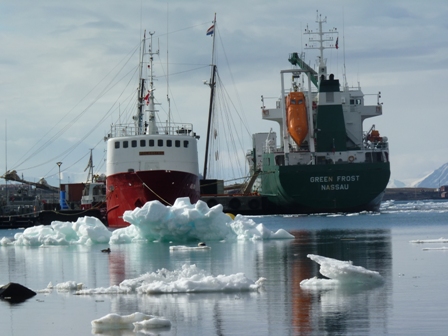

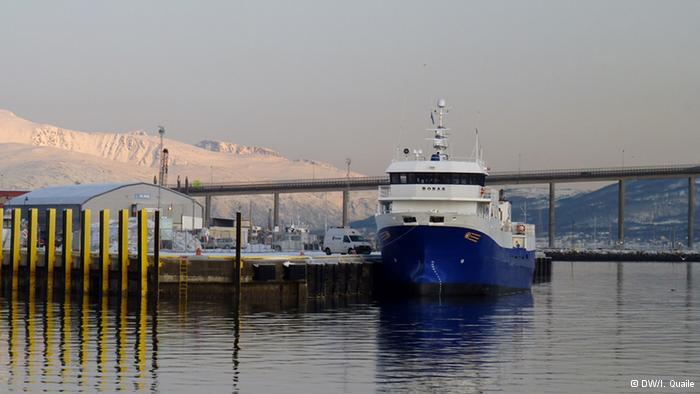

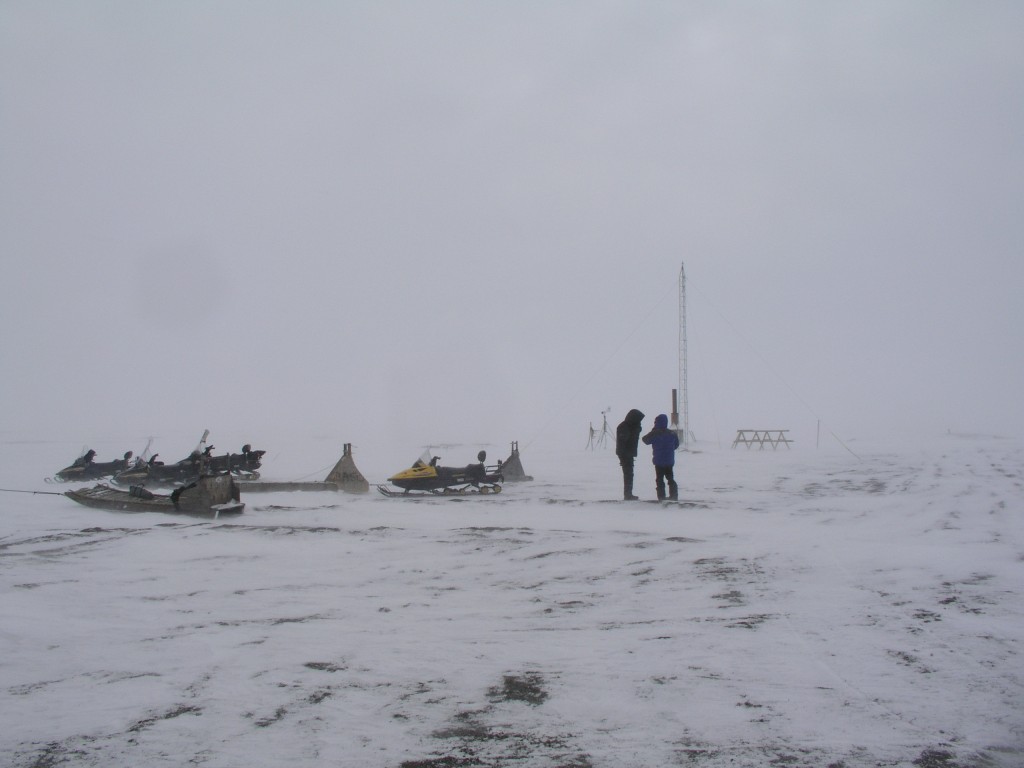
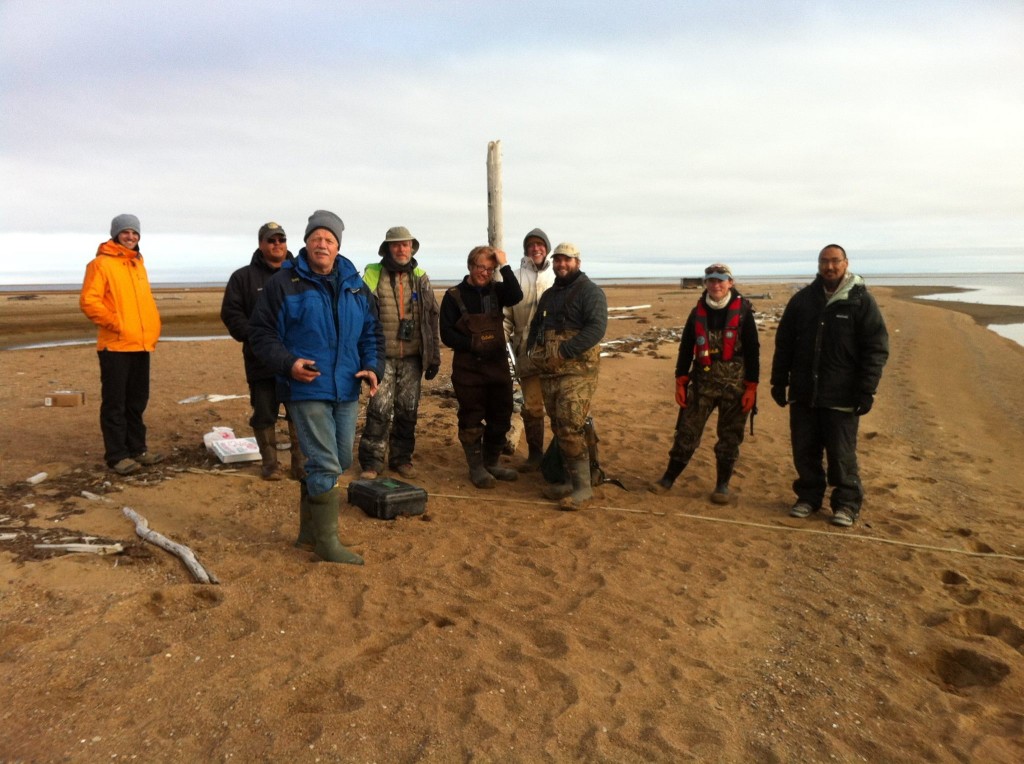
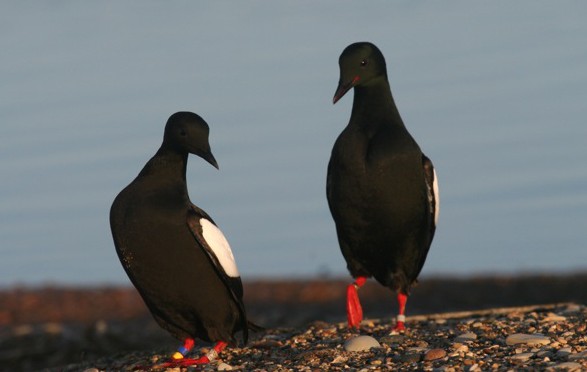
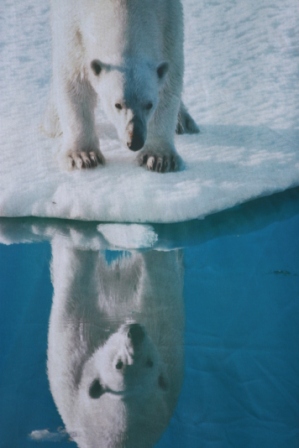

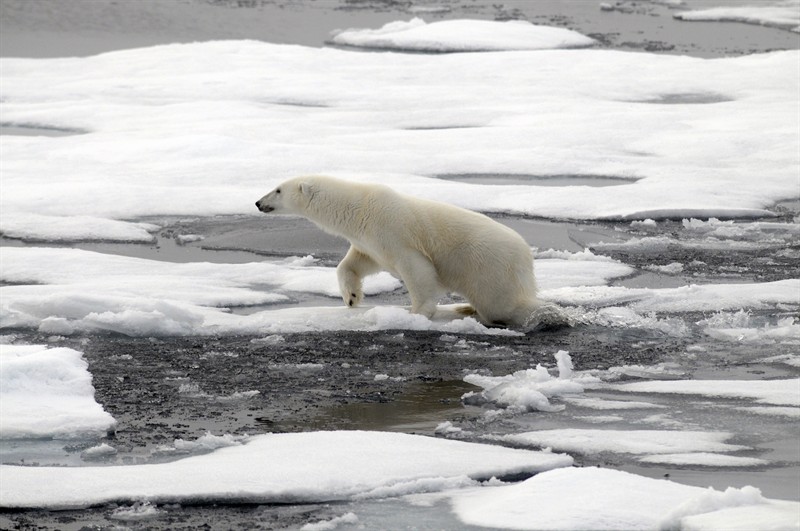
















Feedback